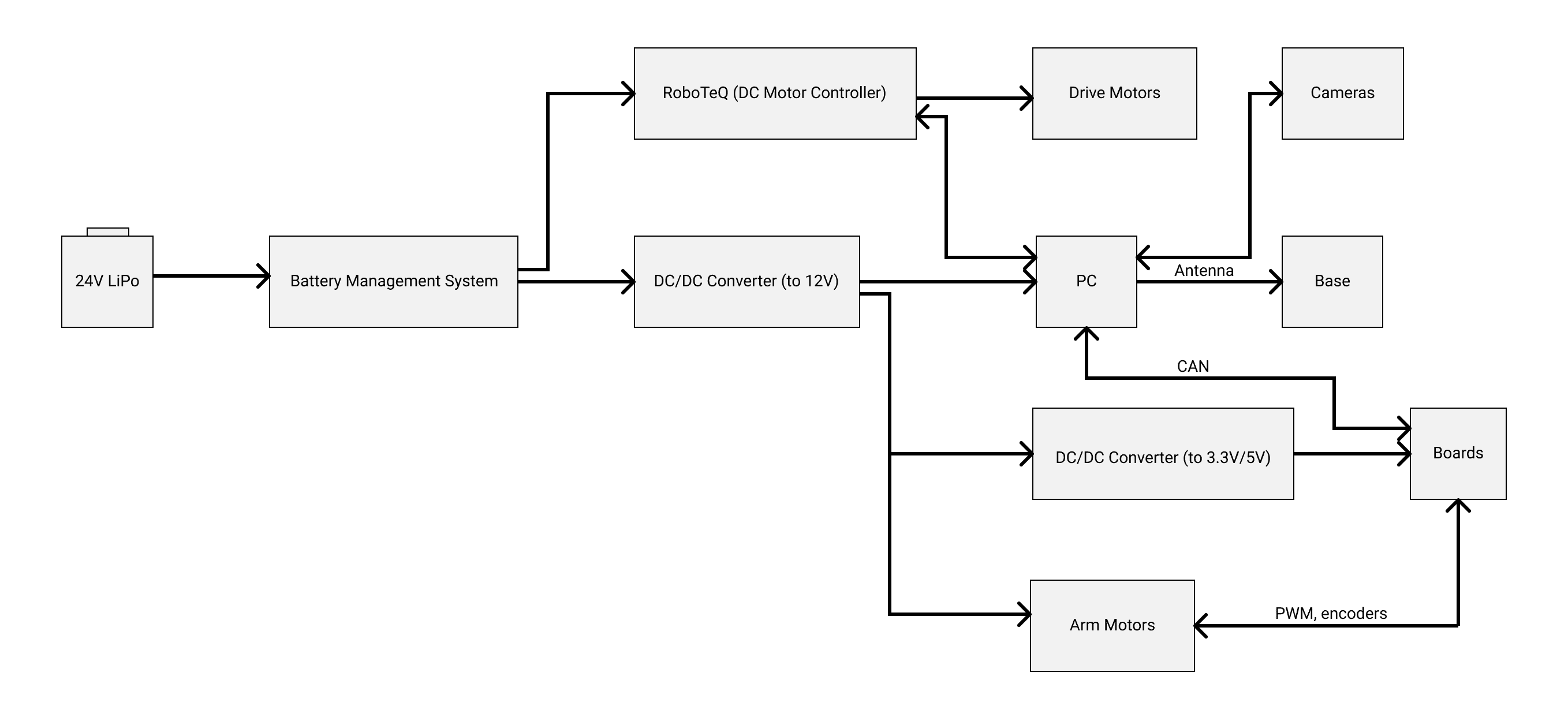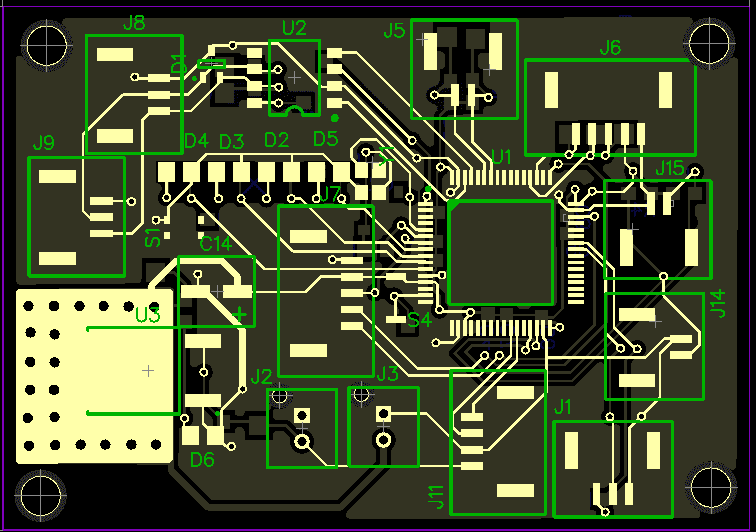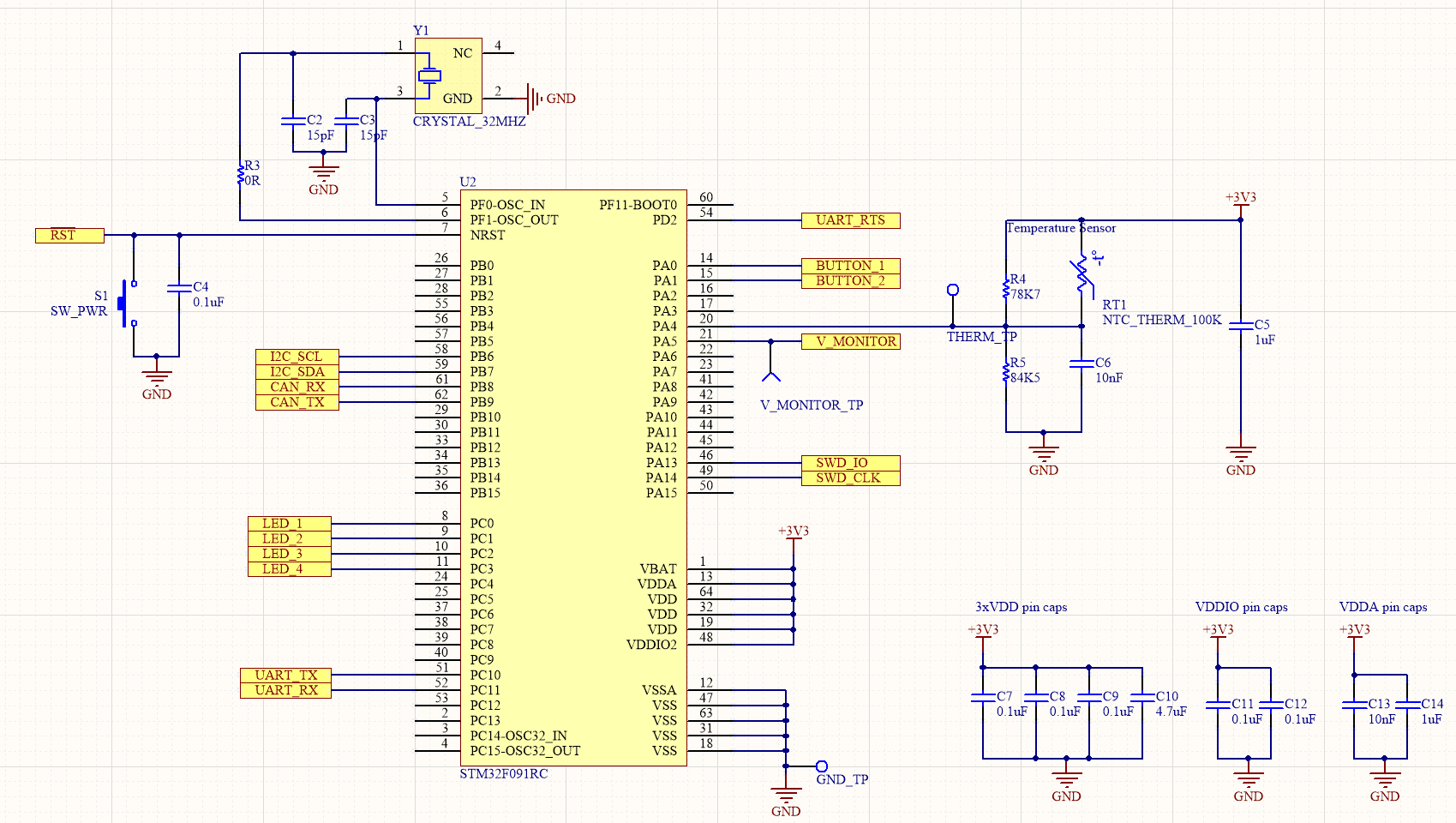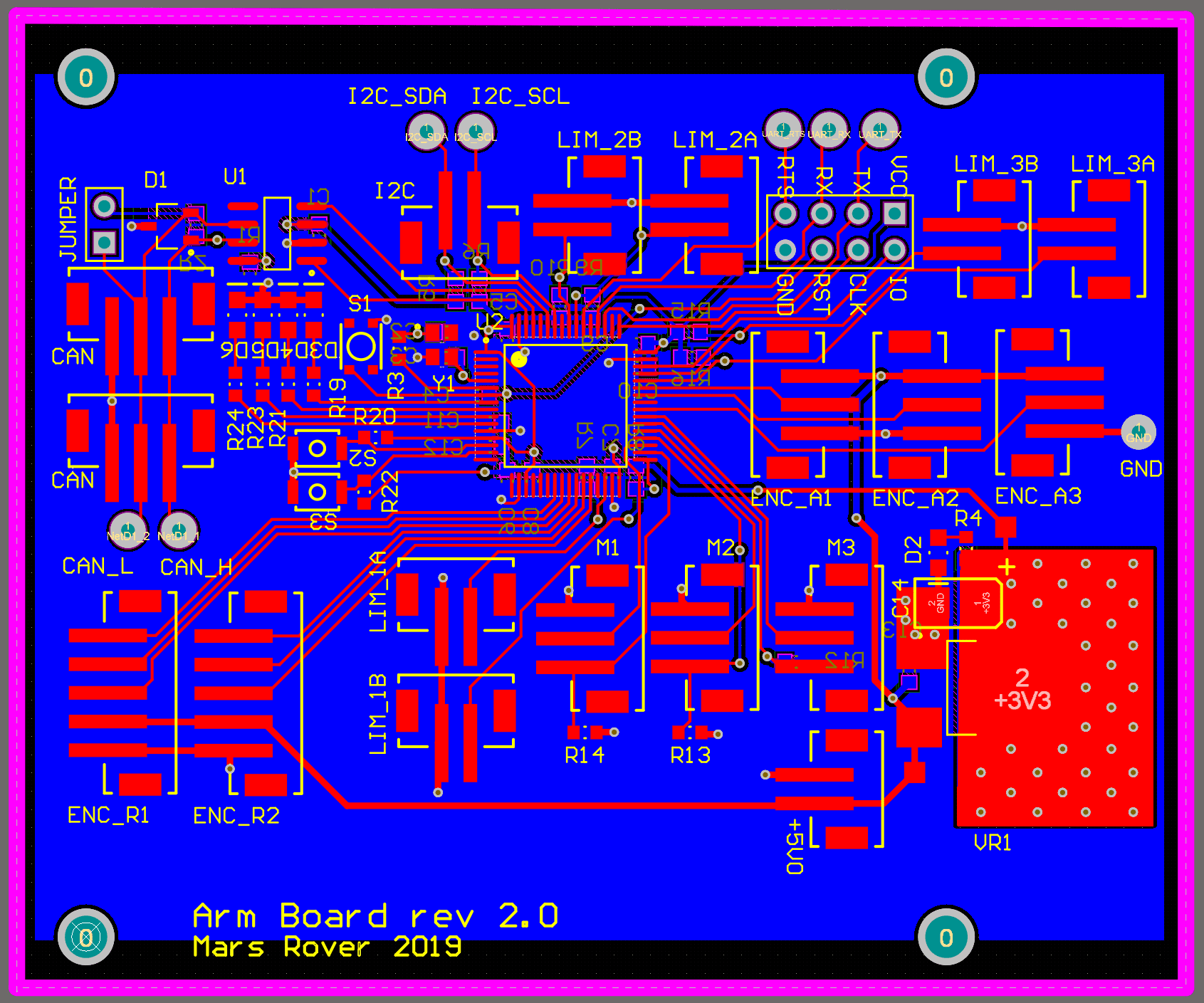—System Overview
At the University Rover Challenge, there are four competition challenges:
- Science Task
- Retrieval and Delivery Task
- Equipment Servicing Task
- Autonomous Traversal Task
As electrical lead, the other co-lead and I divided up tasks for the design and testing of the electrical subsystems. At a high level, we use CAN to communicate between our custom boards and the Jetson TX2 (which sends signals to the base station via the 900MHz and 2.4GHz routers). We use I2C to send data from the custom current sensor boards to the control boards.





